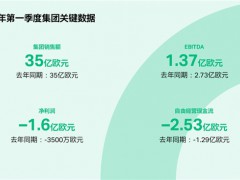全球原油市場供應(yīng)狀況趨緊即將到來
沙特阿拉伯額外日減100萬桶原油產(chǎn)量將在7月份收緊實物石油市場
全球宏觀經(jīng)濟逆風(fēng)使油價回落
據(jù)油價網(wǎng)2023年6月25日報道,美國頁巖遠景區(qū)的石油和天然氣鉆井作業(yè)正在放緩,在用鉆機數(shù)量連續(xù)數(shù)周下降,美國達拉斯聯(lián)邦儲備銀行的最新能源調(diào)查結(jié)果也顯示,美國油氣鉆探活動正在減弱。
有人說,這將導(dǎo)致供應(yīng)萎縮,從而推高價格。其他人在觀察需求走向時仍持謹(jǐn)慎態(tài)度,他們懷疑需求將繼續(xù)疲軟,從而使價格維持在當(dāng)前水平:“如今在美國的生產(chǎn)企業(yè)很難推進工作。”
上述引文是達拉斯聯(lián)邦儲備銀行調(diào)查的一位受訪者的評論的一部分。同一位受訪者總結(jié)了美國油氣行業(yè)目前面臨的主要挑戰(zhàn):“國家監(jiān)管環(huán)境正在惡化。僅僅是做生意的成本就在不斷增加。保險公司正在退出這個行業(yè)。”
事實上,如今從事生產(chǎn)業(yè)務(wù)似乎很困難,而那些從事生產(chǎn)業(yè)務(wù)的人正在采取措施確保他們繼續(xù)經(jīng)營下去。產(chǎn)量增長不在首要任務(wù)之列,這一點已經(jīng)得到了堅定確認(rèn)。但不僅限于產(chǎn)量增長,鉆井公司實際上在限制鉆井活動。
路透社援引依歐格資源公司首席運營官Lloyd Helms在最近由摩根大通主辦的行業(yè)活動中所言報道說,“短期內(nèi)我們不會看到市場進一步收緊。我們對油價走勢的看法更具建設(shè)性”。
根據(jù)貝克休斯公司的每周報告,美國的石油和天然氣鉆探活動已經(jīng)連續(xù)7周下降。路透社指出,這是自去年4月以來的最低水平。
當(dāng)然,當(dāng)鉆井活動收緊時,供應(yīng)預(yù)計也將趨緊,這應(yīng)該會對價格產(chǎn)生積極影響。除非需求也疲軟,否則情況會比平時更加復(fù)雜。
“沙特最近計劃在7月份每天削減100萬桶原油產(chǎn)量以及5月份類似的減產(chǎn)均未能提振油價。在我(本文作者)看來,這是全球經(jīng)濟衰退需求疲軟的信號”,達拉斯聯(lián)邦儲備銀行能源調(diào)查中的一位受訪者如是表示。
他補充稱,“美國今年經(jīng)濟增長率預(yù)計將約為1.2%,這表明美國國內(nèi)需求放緩,而國內(nèi)石油日產(chǎn)量預(yù)計到年底將增加約60萬桶至1275萬桶。這些預(yù)期表明,WTI價格將繼續(xù)承壓”。
當(dāng)然,亞洲需求是人們關(guān)注的焦點,但在今年余下的時間里,亞洲需求將走向何方根本就不確定,盡管今年迄今為止,亞洲大國需求一直在穩(wěn)步上升,并屢創(chuàng)新高。這似乎不足以讓能源行業(yè)高管相信,油價的前景會更加光明。
價格期貨集團(Price Futures Group)的一名分析師對路透社表示:“我們被鎖定在一個交易區(qū)間內(nèi),但對經(jīng)濟的擔(dān)憂拖累了價格。”
達拉斯聯(lián)邦儲備銀行的一名受訪者在總結(jié)形勢時表示:“為了將石油產(chǎn)量維持在當(dāng)前水平,我們在全球范圍內(nèi)的投資仍然不足,而需求繼續(xù)增加,亞洲需求也在上升。”
“這些基本面因素對油價是有益的。然而,在通貨膨脹和利率如何緩和、美國經(jīng)濟是否陷入衰退以及衰退持續(xù)多久方面,央行是主要的參與者。這些都是籠罩在大宗商品市場和資本市場上的不確定性。”
美國也存在監(jiān)管環(huán)境問題,聯(lián)邦政府公開支持替代能源,以相當(dāng)明確的方式將其置于石油和天然氣之上。這進一步削弱了未來生產(chǎn)更多石油和天然氣的計劃。
總而言之,鑒于石油輸出國組織最近的減產(chǎn)和美國鉆井商的謹(jǐn)慎,石油供應(yīng)形勢應(yīng)該令人擔(dān)憂。然而,由于各國央行貨幣政策引發(fā)的持續(xù)衰退擔(dān)憂,需求狀況也令人擔(dān)憂。當(dāng)這種情況繼續(xù)下去的時候,油價將很可能保持區(qū)間波動。
李峻 譯自 油價網(wǎng)
原文如下:
Where Are Oil Prices Going? It's Complicated
· Tighter supply conditions are on the horizon in global crude markets.
· The 1 million bpd extra production cut from Saudi Arabia is set to tighten physical oil markets in July.
· Global macro-economic headwinds keep oil prices back.
Oil and gas drilling in the U.S. shale patch is slowing down. Rig counts have been falling for weeks, and the latest Dallas Fed Energy Survey also showed that activity is weakening.
Some say this would lead to supply shrinkage, which would push prices higher. Others remain cautious as they watch where demand is going, suspecting it will remain weak, keeping prices where they are. "It is hard to be in the production business these days."
The above quote is part of a comment made by a respondent to the Dallas Fed survey. That same respondent summed up the main challenges that the U.S. oil and gas industry is facing right now as follows: "The state regulatory environment is worsening. Costs continue to increase just to do business. Insurance companies are leaving the business."
Indeed, it seems tough to be in the production business these days, and those who are in the business nevertheless are taking measures to ensure they stay in business. That production growth is not among the top priorities has already become firmly established. But it's not only production growth. Drillers are actually curbing drilling activity.
"We're a short term away from seeing the market tighten even further. We are more constructive on where oil prices could go." This is what the chief operating officer of EOG Resources, Lloyd Helms, said at a recent industry event hosted by JP Morgan, as quoted by Reuters.
Oil and gas drilling activity in the United States has been in decline for seven weeks in a row, according to the weekly reports of Baker Hughes. Reuters notes this is the lowest since April 2022.
Naturally, when drilling activity tightens, it is reasonable to expect tighter supply as well, which should affect prices in a positive way. Unless demand is weak as well, which makes the situation more complicated than usual.
"Saudi Arabia's recent production cut of 1 million barrels per day planned for July and the similar cut in May have failed to lift oil prices. In my view this is signaling weak worldwide recessionary demand," one of the Dallas Fed Energy Survey respondents said.
He added that "U.S. expected growth this year of around 1.2 percent signals slow domestic demand, on top of an expected daily domestic production increase of about 600,000 barrels at year end to 12.75 million barrels per day. These expectations point to continued pressure on West Texas Intermediate posted prices."
Asian demand is in focus, of course, but there is no certainty where it will go at all for the remainder of the year, even though it has been rising steadily and breaking records so far this year. It appears this is insufficient to convince energy executives that there are brighter days ahead for oil prices.
It's not only the Fed, either. On Thursday this week, oil prices slumped by 4% after the Bank of England hiked rates by 50 basis points, which was higher than expected. The surprising size of the hike ignited immediate concern about fuel demand in the country and the outlook for the economy as a whole since this is the 13th rate hike in a row that the BoE is implementing.
"We're locked in a trading range but prices are held back by the concerns about the economy, the larger economy," an analyst from Price Futures Group told Reuters.
"We are still globally underinvesting to keep oil production at current levels, while demand continues to increase, with upside in Asia," one Dallas Fed survey respondent said, summing the situation up.
There is also the regulatory environment issue in the United States, with a federal government that is openly backing alternative energy sources, prioritizing them over oil and gas in a pretty categorical way. This further saps any plans to produce more oil and gas in the future.
All in all, then, the supply situation in oil should be of concern, with OPEC's latest cuts and U.S. drillers' caution. Yet the demand situation is also concerning because of the persistent recession fears fuelled by central banks' monetary policies. While this state of affairs continues, oil prices will likely remain range-bound.
免責(zé)聲明:本網(wǎng)轉(zhuǎn)載自其它媒體的文章及圖片,目的在于弘揚石化精神,傳遞更多石化信息,宣傳國家石化產(chǎn)業(yè)政策,展示國家石化產(chǎn)業(yè)形象,參與國際石化產(chǎn)業(yè)輿論競爭,提高國際石化產(chǎn)業(yè)話語權(quán),并不代表本網(wǎng)贊同其觀點和對其真實性負(fù)責(zé),在此我們謹(jǐn)向原作者和原媒體致以崇高敬意。如果您認(rèn)為本站文章及圖片侵犯了您的版權(quán),請與我們聯(lián)系,我們將第一時間刪除。







